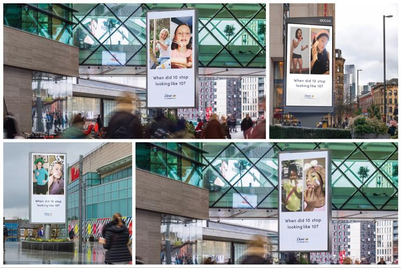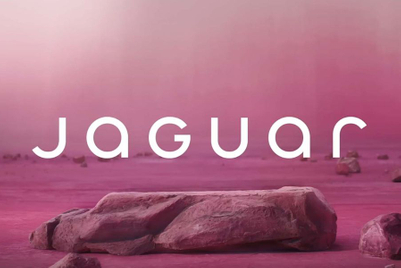
It is perhaps unsurprising that Asia Pacific—the generator of over half of the skincare category's global revenues in 2014, and the expected source of over 75 per cent of skincare absolute growth to 2019—has become the key trend dictator. International players now create products specifically for Asian consumers, test them in Asia and, if successful, launch them in the West as well. Lancôme, Chanel and Christian Dior, among others, follow this strategy. Estée Lauder has even taken it a step further by creating a brand specifically for China back in 2012, called Osiao. Thus, with all eyes on Asia, the region’s influence over skin care has developed in three distinct ways.
Firstly, the rise in popularity and availability of Asian and, more specifically, South Korean beauty has helped innovation adopt a more complex approach. South Korean brands, such as Hera and Etude House, are well known for their multi-step skincare portfolios, which include a number of products, such as cleansers, essence, pre-serum treatments, emulsions and eye serums, all intended for individual application. This has brought about an array of completely new product concepts adopted by international players. Examples include Philosophy’s Brighten My Day All-Over Skin Perfecting Brightening Essence, Embryolisse Emulsion Hydra Mat Freshness Care and La Prairie Anti-Aging Emulsion SPF 30. The trend has also been seen in colour cosmetics, where, since the explosion of BB creams, all eyes have been on Asia for the next “it” offering. Air cushions—a new make-up format from South Korea—appears to be “it”, with L’Oréal’s Lancôme becoming the first Western brand to adopt this trend with its Miracle Cushion foundation. Others are expected to follow suit.
Secondly, Korean and Asian companies are shaking up the competitive field in skin care. Both AmorePacific and LG Household & Health Care—South Korea’s top two leading players—have stepped up both their regional and international expansion. The backlash against Japanese brands in China favoured South Korean brands, with AmorePacific in particular more than doubling its share since 2008. While both companies are still currently outside of the top 20 global beauty companies, they have already made the top 10 in Asia, overtaking Amway, Kosé and Estée Lauder to become numbers seven and eight, respectively, in 2014. The growing international availability of these brands, from Laneige in Target in the US, Dr Jart+ in the UK through Boots, and Missha expanding into Germany, is expected to shake up the competitive field in these countries, as Western brands seek to keep their competitive lead over these niche brands.
The third way that Asia in general and Korea in particular have been influencing skin care globally is through key claims, benefits and ingredients. From snail venom to fragmented ingredients to whitening, Asian consumers’ desires in skin care are now becoming global desires. While it is hard to now find a skincare player without a whitening/lightening line, Asia’s influence beyond creating new trends has also initiated renewed interest in categories and claims that have been neglected in the West. For example, face masks—a category that had been in decline or facing stagnant growth in most of Western Europe and North America, is now experiencing a revival around the world. While face masks are a regular feature in Asian consumers’ skincare regimes, L’Oréal’s acquisition of Magic Holdings and the media’s heavy coverage of the product’s importance in China and Korea have influenced beauty advocates around the world to rediscover the category.
Beyond face masks, a new revival has arrived in the form of increasing importance for hydration. For example, Neutrogena’s latest offering—one of the last innovations to hit the shelves in the US in 2014—claims to bring the importance placed by Asians on hydration to the West. Neutrogena’s Hydro Boost range consists of three key products, a Gel-Cream, a Water Gel and an Eye Gel Cream, which aim to lock in moisture and draw water into the skin. Hydration is considered to be a key benefit in Asia, from cleansers to toners to face masks and moisturisers, and is, in many cases, regarded more highly than anti-aging. The hydration focus has also emerged in the premium segment in the shape of Chanel’s newest product to hit the shelves in the US, called Chanel Hydra Beauty Micro-Serum.
|
What’s next? With all eyes remaining on Asia as a source of inspiration, and as international brands seek ways to compete with Asian players, new trends and innovation are expected to continue to come from the East. Carbonated water, a product first popular in Japan, is now a key facial cleansing offering in South Korea, and is quickly making inroads in the US as well. Carbonated skincare products are already present in many product portfolios in Asia, including Laneige’s Brightening Sparkling Water, offerings from Hera, Nature Republic and Etude House as well as Brilliant, with its Loveheart Sparkling Powder. The trend has featured in popular Korean beauty shows, and it is only a matter of time before it is adopted by the big international brands.
This article first appeared on http://blog.euromonitor.com.





.jpg&h=334&w=500&q=100&v=20250320&c=1)
.jpg&h=334&w=500&q=100&v=20250320&c=1)
.jpeg&h=334&w=500&q=100&v=20250320&c=1)
.jpg&h=334&w=500&q=100&v=20250320&c=1)
.jpg&h=334&w=500&q=100&v=20250320&c=1)
.jpg&h=334&w=500&q=100&v=20250320&c=1)


.jpg&h=268&w=401&q=100&v=20250320&c=1)





.jpg&h=268&w=401&q=100&v=20250320&c=1)
